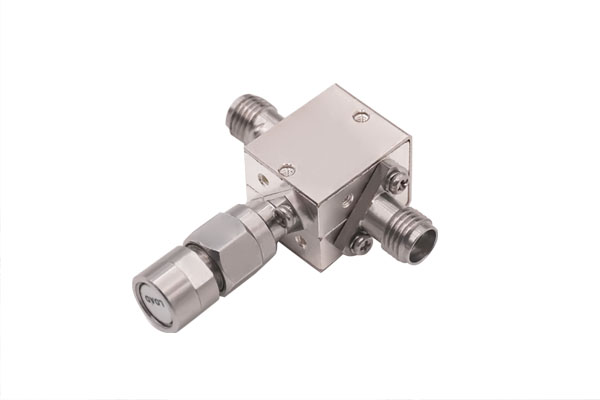In RF systems, the main function of RF isolators is to provide or enhance isolation capabilities for different signal paths. It is an improved circulator that is terminated by matching impedance at one of its ports. It is usually used in radar systems to protect sensitive circuits at the receiving end to avoid interference from high-power transmitted signals, thereby achieving effective isolation of transmitted and received signals. This article will take you to understand the core performance parameters of RF isolators.
一. Definition
RF isolators are essentially a special form of RF circulators, in which one port (usually the reverse path end of the signal chain) is terminated by a matching load to achieve unidirectional transmission of signals. It only allows signals to pass in a predetermined direction while suppressing reflections, noise or interference signals from the reverse direction, thereby achieving effective isolation of the previous link.
RF isolators or circulators are usually passive ferrite devices that guide electromagnetic waves from the input end in a specific direction through a specific magnetic field configuration and output at the adjacent port.
Compared with isolators modified from conventional RF circulators, devices designed specifically for isolation purposes are usually more compact and easier to integrate. Its isolation performance is directly affected by the quality of terminal matching.
High frequency standard isolator, Isolation (12-14dB), 18 to 40GHz
二. Performance parameters
The key performance indicators of RF isolators include:
Frequency range (Hz)
Impedance (Ω)
Insertion loss (dB)
Isolation (dB)
Voltage standing wave ratio (VSWR)
Forward power handling capability (continuous wave or peak)
Reverse power handling capability (continuous wave or peak)
Connector type
Among them, isolation is one of the most critical parameters, which indicates the degree of coupling between RF paths in decibels (dB). The higher the value, the smaller the coupling between signals and the better the isolation effect. Since electromagnetic coupling is prevalent in all conductive paths, it is particularly important to maintain high isolation between paths in high-precision communication or sensing systems.
In addition, according to different application requirements, isolators must also have suitable power handling capacity, low VSWR, high-reliability connector structure, appropriate size, and adaptable operating temperature range, which may affect their performance in actual scenarios. The maximum power index of the isolator may also be limited by the characteristics of the terminated load.
Post time: May-30-2025

 Catalogue
Catalogue




